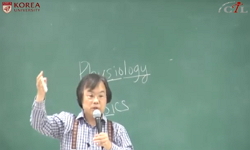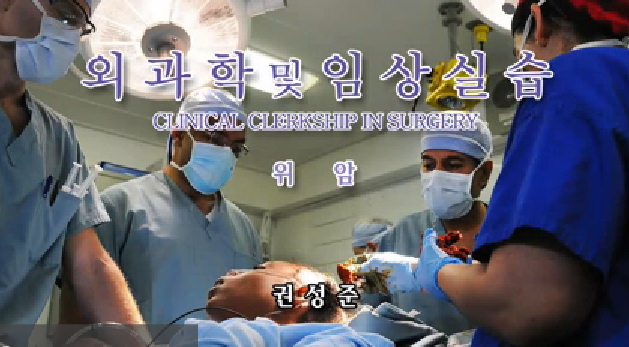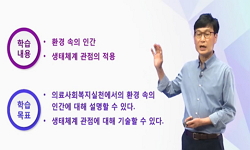Study Design: Retrospective observational study. Purpose: We considered the relationship between spinal alignment and skeletal muscle mass on clinical outcomes following a surgery for lumbar spinal stenosis (LSS). Overview of Literature: There are no ...
http://chineseinput.net/에서 pinyin(병음)방식으로 중국어를 변환할 수 있습니다.
변환된 중국어를 복사하여 사용하시면 됩니다.
- 中文 을 입력하시려면 zhongwen을 입력하시고 space를누르시면됩니다.
- 北京 을 입력하시려면 beijing을 입력하시고 space를 누르시면 됩니다.


Influence of Skeletal Muscle Mass and Spinal Alignment on Surgical Outcomes for Lumbar Spinal Stenosis
한글로보기https://www.riss.kr/link?id=A106064174
-
저자
Yawara Eguchi (Shimoshizu National Hospital) ; Munetaka Suzuki (Shimoshizu National Hospital) ; Hajime Yamanaka (Shimoshizu National Hospital) ; Hiroshi Tamai (Shimoshizu National Hospital) ; Tatsuya Kobayashi (Shimoshizu National Hospital) ; Sumihisa Orita (Chiba University) ; Kazuyo Yamauchi (Chiba University) ; Miyako Suzuki (Chiba University) ; Kazuhide Inage (Chiba University) ; Kazuki Fujimoto (Chiba University) ; Hirohito Kanamoto (Chiba University Graduate School of Medicine) ; Koki Abe (Chiba University) ; Masaki Norimoto (Graduate School of Medicine, Chiba University) ; Tomotaka Umimura (Graduate School of Medicine, Chiba University) ; Yasuchika Aoki (Eastern Chiba Medical Center) ; Masao Koda (Chiba University) ; Takeo Furuya (Chiba University) ; Tomoaki Toyone (Showa University) ; Tomoyuki Ozawa (Showa University School of Medicine) ; Kazuhisa Takahashi (Chiba University) ; Seiji Ohtori (Chiba University)

- 발행기관
- 학술지명
- 권호사항
-
발행연도
2018
-
작성언어
English
- 주제어
-
등재정보
KCI등재,SCOPUS,ESCI
-
자료형태
학술저널
-
수록면
556-562(7쪽)
-
KCI 피인용횟수
1
- DOI식별코드
- 제공처
-
0
상세조회 -
0
다운로드
부가정보
다국어 초록 (Multilingual Abstract)
Study Design: Retrospective observational study.
Purpose: We considered the relationship between spinal alignment and skeletal muscle mass on clinical outcomes following a surgery for lumbar spinal stenosis (LSS).
Overview of Literature: There are no reports of preoperative factors predicting residual low back pain following surgery for LSS.
Methods: Our target population included 34 women (mean age, 74.4 years) who underwent surgery for LSS. Prior to and 6 months after the surgery, systemic bone mineral density and lean soft tissue mass were measured using dual-energy X-ray absorptiometry.
Skeletal muscle mass index (SMI) was calculated as the sum of the arm and leg lean mass in kilograms divided by height in meters squared. The spinal alignment was also measured. Clinical outcomes were evaluated using the Japanese Orthopedic Association scoring system, leg and low back pain Visual Analog Scale, and Roland–Morris Disability Questionnaire (RDQ). Additionally, we examined the bone mineral density, skeletal muscle mass, and spinal alignment before and after the surgery. We used the Spearman correlation coefficient to examine the associations among clinical outcomes, preoperative muscle mass, and spinal alignment.
Results: Sarcopenia (SMI <5.46) was observed in nine subjects (26.5%). Compared with normal subjects (SMI >6.12), RDQ was significantly higher in subjects with sarcopenia (p =0.04). RDQ was significantly negatively correlated with SMI (r =−0.42, p <0.05). There was a significant positive correlation between postoperative RDQ and pelvic tilt (PT; r =0.41, p <0.05). SMI and PT were significantly negatively correlated (r =−0.39, r <0.05).
Conclusions: Good postoperative outcomes were negatively correlated with low preoperative appendicular muscle mass, suggesting that postoperative outcomes were inferior in cases of decreased appendicular muscle mass (sarcopenia). Posterior PT due to decreased limb muscle mass may contribute to postoperative back pain, showing that preoperatively reduced limb muscle mass and posterior PT are predictive factors in the persistence of postoperative low back pain.
참고문헌 (Reference)
1 Eguchi Y, "The influence of sarcopenia in dropped head syndrome in older women" 12 : 5-, 2017
2 Glassman SD, "The impact of positive sagittal balance in adult spinal deformity" 30 : 2024-2029, 2005
3 Schwab F, "Scoliosis Research Society-Schwab adult spinal deformity classification: a validation study" 37 : 1077-1082, 2012
4 Morley JE, "Sarcopenia: diagnosis and treatment" 12 : 452-456, 2008
5 Schwab FJ, "Radiographical spinopelvic parameters and disability in the setting of adult spinal deformity: a prospective multicenter analysis" 38 : E803-E812, 2013
6 Miyakoshi N, "Prevalence of sarcopenia in Japanese women with osteopenia and osteoporosis" 31 : 556-561, 2013
7 Cruz-Jentoft AJ, "Prevalence of and interventions for sarcopenia in ageing adults: a systematic review: report of the International Sarcopenia Initiative (EWGSOP and IWGS)" 43 : 748-759, 2014
8 Lafage V, "Pelvic tilt and truncal inclination: two key radiographic parameters in the setting of adults with spinal deformity" 34 : E599-E606, 2009
9 Ganz JC, "Lumbar spinal stenosis: postoperative results in terms of preoperative posture-related pain" 72 : 71-74, 1990
10 Takemitsu Y, "Lumbar degenerative kyphosis: clinical, radiological and epidemiological studies" 13 : 1317-1326, 1988
1 Eguchi Y, "The influence of sarcopenia in dropped head syndrome in older women" 12 : 5-, 2017
2 Glassman SD, "The impact of positive sagittal balance in adult spinal deformity" 30 : 2024-2029, 2005
3 Schwab F, "Scoliosis Research Society-Schwab adult spinal deformity classification: a validation study" 37 : 1077-1082, 2012
4 Morley JE, "Sarcopenia: diagnosis and treatment" 12 : 452-456, 2008
5 Schwab FJ, "Radiographical spinopelvic parameters and disability in the setting of adult spinal deformity: a prospective multicenter analysis" 38 : E803-E812, 2013
6 Miyakoshi N, "Prevalence of sarcopenia in Japanese women with osteopenia and osteoporosis" 31 : 556-561, 2013
7 Cruz-Jentoft AJ, "Prevalence of and interventions for sarcopenia in ageing adults: a systematic review: report of the International Sarcopenia Initiative (EWGSOP and IWGS)" 43 : 748-759, 2014
8 Lafage V, "Pelvic tilt and truncal inclination: two key radiographic parameters in the setting of adults with spinal deformity" 34 : E599-E606, 2009
9 Ganz JC, "Lumbar spinal stenosis: postoperative results in terms of preoperative posture-related pain" 72 : 71-74, 1990
10 Takemitsu Y, "Lumbar degenerative kyphosis: clinical, radiological and epidemiological studies" 13 : 1317-1326, 1988
11 La Grone MO, "Loss of lumbar lordosis: a complication of spinal fusion for scoliosis" 19 : 383-393, 1988
12 Aoki Y, "Influence of pelvic incidence-lumbar lordosis mismatch on surgical outcomes of short-segment transforaminal lumbar interbody fusion" 16 : 213-, 2015
13 Jones AD, "Improvement in low back pain following spinal decompression: observational study of 119 patients" 23 : 135-141, 2014
14 Wu IC, "Epidemiology of sarcopenia among community-dwelling older adults in Taiwan: a pooled analysis for a broader adoption of sarcopenia assessments" 14 (14): 52-60, 2014
15 Kostuik JP, "Combined single stage anterior and posterior osteotomy for correction of iatrogenic lumbar kyphosis" 13 : 257-266, 1988
16 Eguchi Y, "Associations between sarcopenia and degenerative lumbar scoliosis in older women" 12 : 9-, 2017
17 Yawara Eguchi, "Assessment of Clinical Symptoms in Lumbar Foraminal Stenosis Using the Japanese Orthopaedic Association Back Pain Evaluation Questionnaire" 대한척추신경외과학회 14 (14): 1-6, 2017
18 Sanada K, "A crosssectional study of sarcopenia in Japanese men and women: reference values and association with cardiovascular risk factors" 110 : 57-65, 2010
동일학술지(권/호) 다른 논문
-
- 대한척추외과학회
- 한석
- 2018
- KCI등재,SCOPUS,ESCI
-
- 대한척추외과학회
- Charanjit Singh Dhillon
- 2018
- KCI등재,SCOPUS,ESCI
-
- 대한척추외과학회
- 허동화
- 2018
- KCI등재,SCOPUS,ESCI
-
- 대한척추외과학회
- Kazuhiro Kai
- 2018
- KCI등재,SCOPUS,ESCI
분석정보
인용정보 인용지수 설명보기
학술지 이력
| 연월일 | 이력구분 | 이력상세 | 등재구분 |
|---|---|---|---|
| 2024 | 평가예정 | 해외DB학술지평가 신청대상 (해외등재 학술지 평가) | |
| 2021-01-01 | 평가 | 등재학술지 선정 (해외등재 학술지 평가) |  |
| 2020-12-01 | 평가 | 등재 탈락 (해외등재 학술지 평가) | |
| 2013-10-01 | 평가 | 등재학술지 선정 (기타) |  |
| 2011-01-01 | 평가 | SCOPUS 등재 (신규평가) |  |
학술지 인용정보
| 기준연도 | WOS-KCI 통합IF(2년) | KCIF(2년) | KCIF(3년) |
|---|---|---|---|
| 2016 | 0 | 0 | 0 |
| KCIF(4년) | KCIF(5년) | 중심성지수(3년) | 즉시성지수 |
| 0 | 0 | 0 | 0 |




 KCI
KCI






